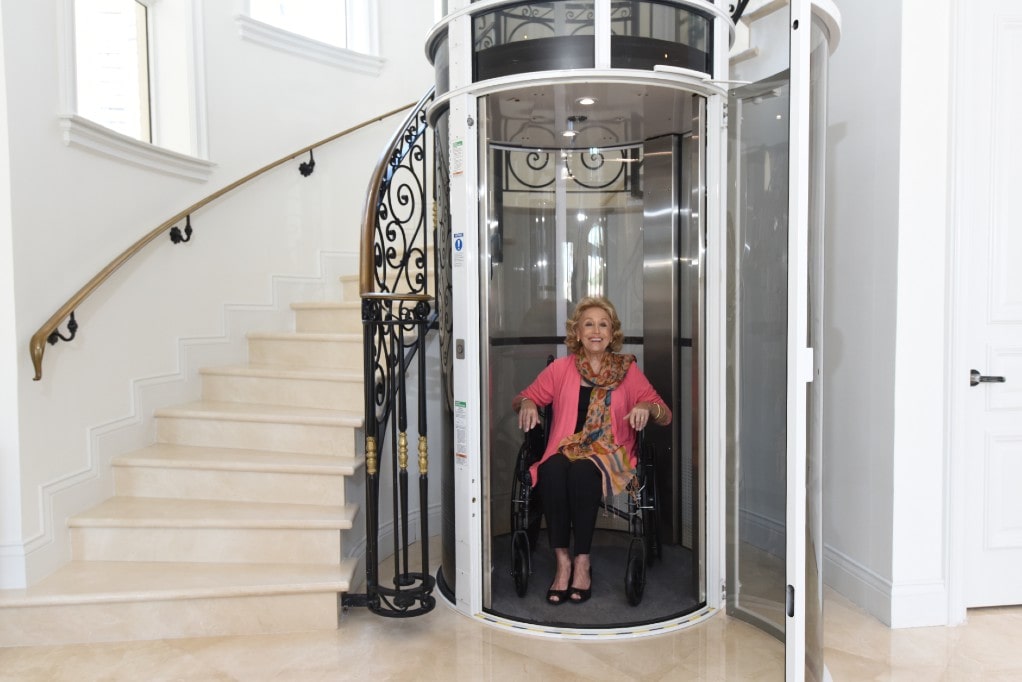Discover Trustworthy Lift Repair Near Me for Rapid and Affordable Service
Discover Trustworthy Lift Repair Near Me for Rapid and Affordable Service
Blog Article
Exploring the Globe of Lifts: Common Concerns Dealt With by Different Lift Devices
As we navigate via the vertical transportation systems of modern structures, lifts stick out as an essential component of our every day lives. Nevertheless, behind their seamless procedure lies a world of detailed systems that can often run into challenges. From hydraulic lifts to traction systems and machine-room-less designs, each lift type features its collection of typical issues. Understanding these obstacles is essential for ensuring the smooth performance of these important systems. Let's explore the complexities that underlie the operation of elevators and the prospective problems that can emerge, clarifying the complex internet of lift devices.
Hydraulic Elevators
Hydraulic elevators, often liked for low-rise buildings, use fluid pressure to manage the motion of the elevator vehicle (lift repair companies). This device entails a hydraulic pump pushing oil into a cyndrical tube, causing the lift to relocate the desired direction. While hydraulic elevators are recognized for their silent and smooth procedure, they do feature their own collection of common concerns
One widespread problem with hydraulic lifts is oil leakage. In addition, issues with the control system, such as malfunctioning valves or a malfunctioning pump, can create disturbances in the lift's activity.
Routine maintenance and punctual repair services are vital to make sure the smooth functioning of hydraulic elevators. By resolving these common issues proactively, building proprietors can lessen downtime and ensure the security and performance of their upright transportation system.
Grip Lifts
When thinking about vertical transport systems in buildings, one more common type other than hydraulic lifts is the traction lift. Traction elevators operate utilizing a system of ropes and weights that move the elevator vehicle by clutching onto the hoist ropes. This device enables for smoother and faster vertical transport compared to hydraulic systems.
Among the common problems dealt with by grip elevators is rope wear. The continuous movement of the ropes within the traction system can bring about damage over time, potentially causing the lift to malfunction or end up being harmful for usage. Routine evaluations and maintenance of the ropes are vital to guarantee the elevator's appropriate functioning and safety and security.
An additional concern that traction lifts may run into is connected to the control system. Troubles with the control system can result in concerns such as unpredictable motion, hold-ups in reaction times, or perhaps full closures. Regular screening and maintenance of the control system are crucial to avoid such problems and ensure the elevator's integrity.
Machine-Room-Less (MRL) Elevators

Among the vital components of MRL lifts is the small gearless grip machine that is set up within the hoistway. This maker efficiently drives the elevator car without the need for bulky devices discovered in typical traction lifts. In addition, MRL lifts typically use a counterweight system to stabilize the vehicle, additional boosting their energy effectiveness.
Despite their advantages, MRL elevators may face challenges associated with repair and maintenance due to the confined area for devices installation. Ease of access for servicing elements within the shaft can be limited, calling for specialized training for professionals. Appropriate maintenance schedules and regular evaluations are essential to guarantee the continued smooth operation of MRL elevators.
Overloading and Weight Limit Issues
Are elevators outfitted to deal with excess weight lots effectively and securely? Straining and weight limit issues are crucial problems in lift procedures. Lift makers style raises with certain weight abilities to guarantee traveler safety and security like this and devices longevity. Exceeding these weight restrictions can cause different issues, including mechanical failures, delays, and safety risks.
When elevators are overwhelmed, it places excessive pressure on the electric motor, wires, and other components, potentially triggering break downs or malfunctions. If they spot excess weight, security mechanisms such as sensing units and overload sensors are in location to protect against elevators from relocating. Additionally, going beyond weight limits can result in enhanced power intake and wear and tear on the lift system.
To minimize overloading issues, constructing supervisors must prominently present weight limits in Go Here elevators and inform passengers on the value of sticking to these constraints - lift repair companies. Regular upkeep checks by qualified technicians can additionally aid guarantee that elevators are operating within risk-free weight specifications. By addressing overloading and weight restriction problems proactively, structure proprietors can enhance elevator safety and efficiency
Electrical System Failings
Surpassing weight restrictions in lifts can not just lead to mechanical concerns however likewise possibly contribute to electric system failures within the lift framework. Electric system failings are a critical worry in elevator operation, as they can trigger unanticipated closures, malfunctions, or also safety hazards. One typical electric concern is the overheating of elements because of excessive current circulation triggered by overwhelming the lift past its capability. This can cause damage to the electrical wiring, control, or motor systems, causing pricey repairs and downtime.
Normal upkeep and inspections are important to determine and attend to prospective electrical issues quickly, making certain the effective and safe procedure of lift systems. By sticking to weight limitations and carrying out routine electric system checks, structure owners can alleviate the risk of electric failings in lifts.
Verdict

Hydraulic elevators, typically chosen for low-rise structures, make use of fluid pressure to regulate the motion of the lift vehicle.When taking into consideration vertical transport systems in structures, an additional common kind aside from hydraulic elevators is the traction elevator. Traction lifts operate making use of a system of ropes and counterweights that relocate the browse around these guys elevator auto by clutching onto the hoist ropes. Unlike traditional elevators that call for a different device area to house the tools, MRL lifts incorporate most of the elements within the shaft, eliminating the demand for a committed maker room.In final thought, elevators encounter common problems such as hydraulic malfunctions, grip system failures, and electrical system issues.
Report this page